17. Slaughterhouse-5 (1972)
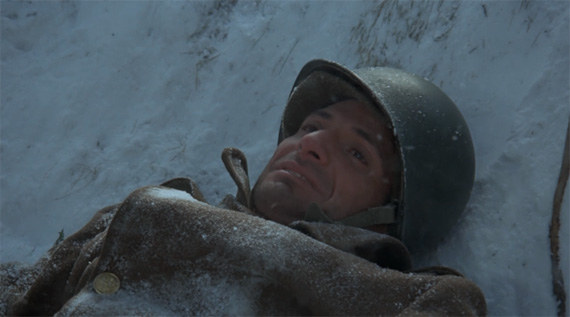
Fans of Kurt Vonnegut’s satirical postmodernist anti-war novel have, sadly, never exactly been ecstatic over George Roy Hill’s ambitious cinematic adaptation, which eschews a great number of details––including the iconic character Kilgore Trout––but if you can forgive these diversions, Hill has offered up a honey of a film, and one deserving of the Prix du Jury it was awarded at Cannes in 1972.
Billy Pilgrim (Michael Sacks) is a WWII soldier who has become “unstuck in time” and director Hill has made certain to pack as much poignant imagery, emotional resonance, and haunting heartache––immeasurably aided by Glenn Gould’s ivory-tinkling score––resulting in what’s certainly the best Vonnegut adaptation to date. Not to be missed.
16. Westworld (1973)
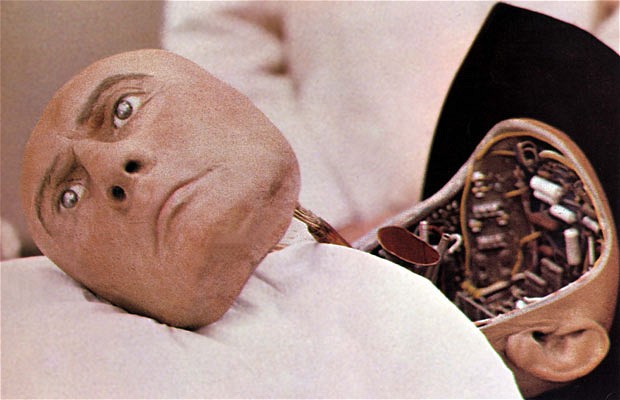
A wonderfully weird mélange marrying the Western, the thriller and the sci-fi film with largely pleasing and certainly chilling results, Westworld also marks the somewhat schlocky cinematic directorial debut of Michael Crichton.
Set in Delos, an amusement park staffed by robots––like nothing could go wrong here––thank goodness android gunslinger Yul Brynner has hardwired safeguards to prevent him from massacring humans, though a rampant computer virus isn’t making it any easier for the mechanical entertainers eager to act homicidal in serio-comic fashion.
While the Westworld plot arcs in the direction of Crichton’s later and similar Jurassic Park, it also shares a similar spate of fistpumping fun, fromage, and formidable heroes and villains. The satire that Crichton presents may not sting as much as intended but it works as escapist action cinema, and as an excellent artifact of 70s pop culture.
15. Sleeper (1973)
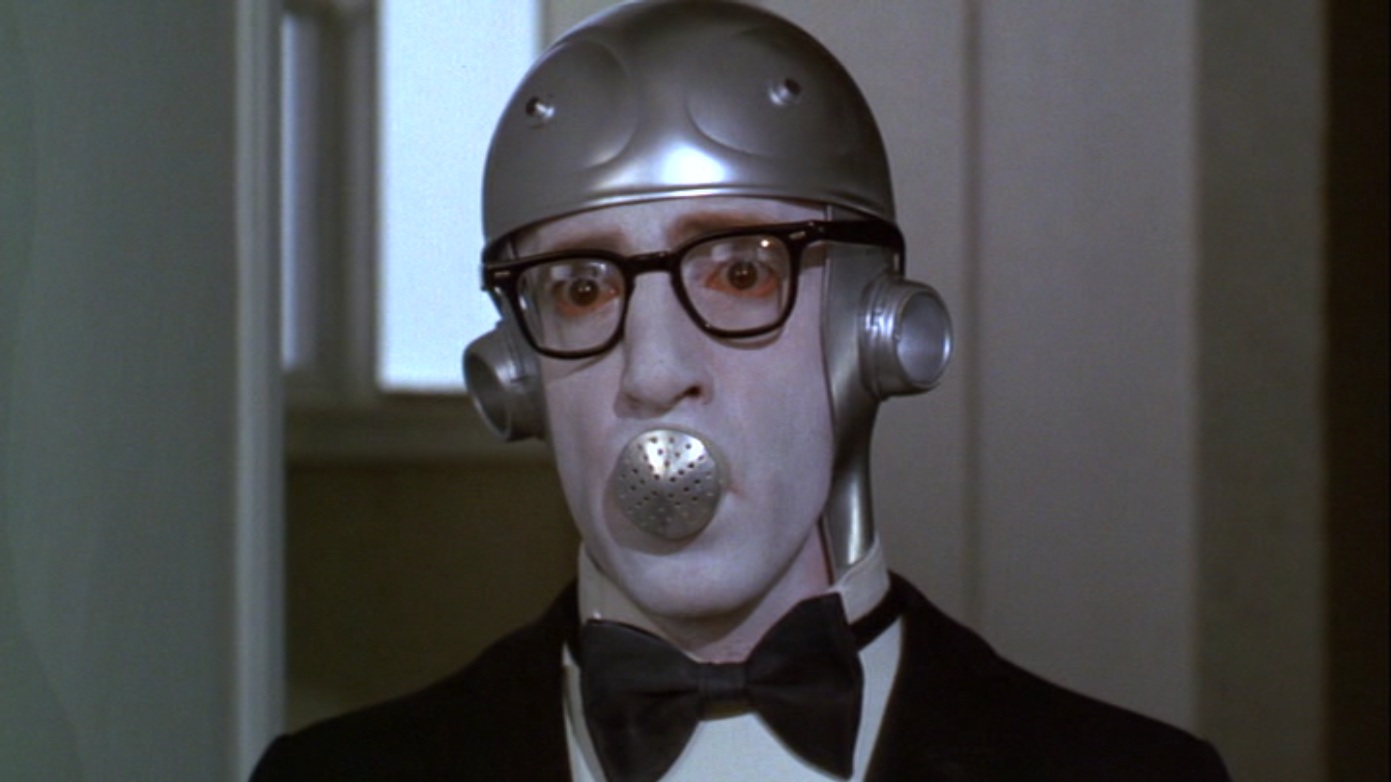
Woody Allen’s superb 1970s run includes this oddball and far-out futurist genre slice that riffs on Rip Van Winkle, the mock science fiction gigglefest––one word: Orgasmatron––Sleeper. Allen, who also wrote and directed, stars as Miles Monroe, proprietor of the Happy Claret Health Food Restaurant and passionate clarinetist with the Ragtime Rascals, Miles goes to St. Vincent’s Hospital due to a dyspeptic ulcer only to be frozen and then thawed almost two centuries later.
“I can’t believe this!” laments Miles. “My doctor said I’d be up in five days, he was off by 195 years!” And after some contemplation he adds, “I parked right near the hospital, too, I knew it was too good to be true!”
Sleeper abounds in sight gags, pantomime, and puns, it works as well as an homage to the Marx Brothers as it does to speculative fiction, and his muse of the day, Diane Keaton, kills it, too, as complacent future babe, Luna.
Soon the pair are fugitives, not above impersonating androids on the way to a slapstick finale yet still containing hints of the serious artist Allen would later become. Sleeper’s gag-to-laugh ratio is off the charts and the “cosmic screwing” that befalls Miles benefits the viewer, who’ll need to watch Sleeper twice just to catch all the nonstop gags. A gem.
14. Quintet (1979)
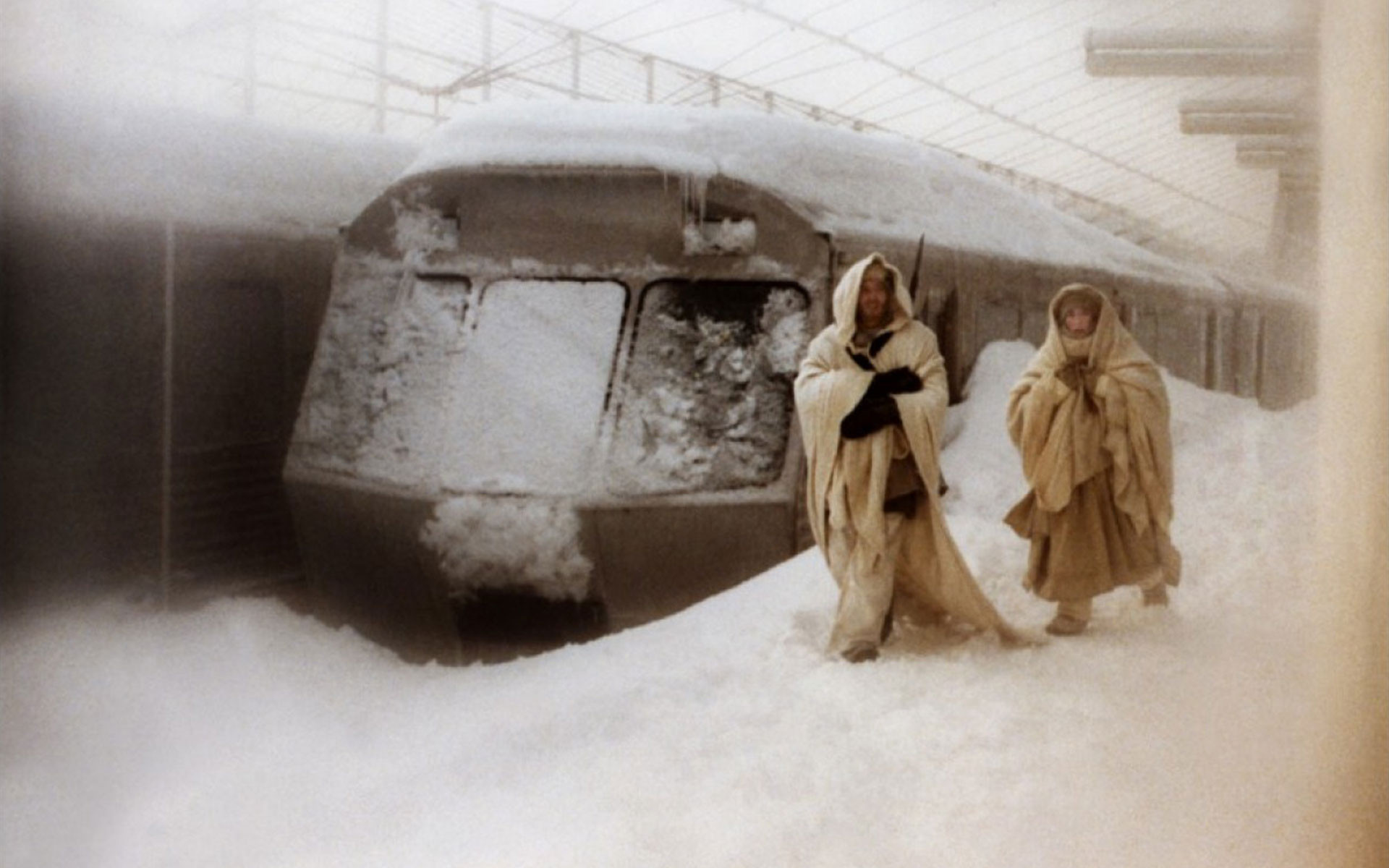
Robert Altman’s deliberately paced and altogether artful post-apocalyptic sci-fi tale confounded critics and audiences on its initial release, and it’s a crying shame that begs the question: can a reassessment be far behind for this overlooked gem?
Set in the distant future, during a new ice age, Quintet features an A-list international cast that includes Paul Newman, Bibi Andersson, and Fernando Rey, each vying for a meaningful life in a landscape of desolation and uncertainty. In a world buried beneath endless snow, the few survivors scavenge for what little food remains, journeying vast distances and ultimately ending up at the Hotel Electra where a deadly five-sided board game, “Quintet”, is played.
In keeping with much of his work from this period, specifically 3 Women and Images, Altman instills a subtle greatness and obscure-yet-ever-building tension amongst these characters, their dreamlike environs, and a plot that is frequently clear as mud. Quintet is a challenging watch, but a rewarding one for the patient viewer or those who enjoy the mysteries of a Möbius strip film, where the meaning must be puzzled out, wrestled, tamed, dissected, and discussed. A treasure.
13. Silent Running (1971)
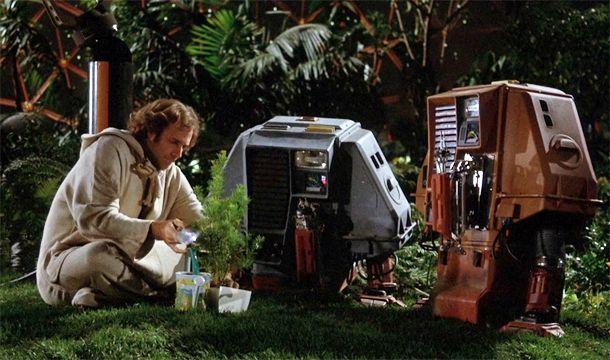
Even at the risk of madness, man and his machines must save the world in Douglas Trumbull’s rememberable speculative fiction foray, Silent Running. Famously filmed as Trumbull’s “reaction” to Kubrick’s classic 2001, it does share a similar sense of wonder, intelligence, and special effects, though doesn’t grasp the same level of philosophical head spinning that 2001 does. That said, it’s uncompromising look at eco-disaster and mankind’s folly is very Kubrickian and Trumbull deserves praise for crafting a sci-fi classic all his own.
Bruce Dern is terrific and carries much of the film––it’s nearly a one man show after all––as Freeman Lowell, a botanist aboard the Valley Forge, a space freighter charged with growing and preserving plant life, as all vegetation is now extinct on Earth’s surface.
Things aboard the Valley Forge go south, of course, when orders come down to decimate the vegetation via nuclear payload, and that’s when Silent Running really starts firing on all cylinders. A little didactic at times, this is still a wonderful genre film, with impressive special effects and production design and Dern in one of his best roles. An underrated sci-fi drama worthy of being dubbed a classic.
12. The Man Who Fell to Earth (1976)
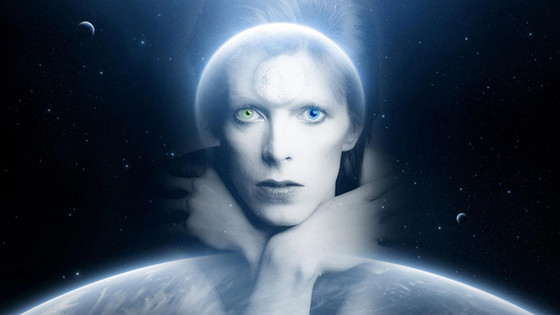
With an abundance of unexplained leaps in location and chronology and his cheeky trademark sophisticated style, Nicolas Roeg’s adaptation of the 1963 Walter Tevis novel, The Man Who Fell to Earth is an ambitious and meditative marvel that was quite ahead of its time.
Starring Thin White Duke-era rock icon David Bowie as Thomas Jerome Newton, an alien who’s doomed visit to Earth will offer up a multifaceted and ultra-sophisticated inspection of American culture, heartbreak, and homesickness. Bowie’s character is named for the English scientist Isaac Newton, discoverer of gravity, and our protagonist here will make discoveries as philosophically and psychologically substantial.
Poignant, provocative, and deeply transfixing, genre films are rarely as substantial, extravagant, or as ambitious as The Man Who Fell to Earth. Populist cinema this most certainly is not, and though at times indecipherable, Roeg is a satirist and an artist of incredible breadth of view.
11. Close Encounters of the Third Kind (1977)
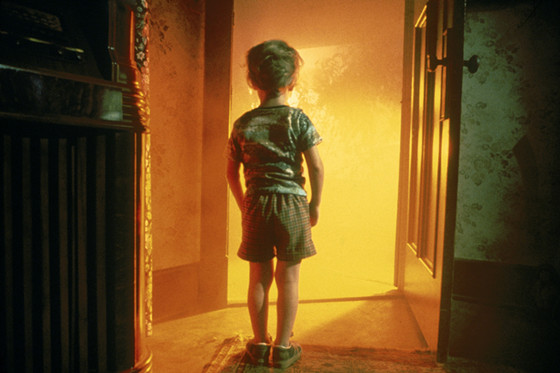
A gifted visual storyteller, Steven Spielberg has no qualms letting the story staul in order for spectacle to take over, as in the epic landing of the massive alien spaceship, the cherry on this super sweet hot fudge sci-fi sundae loved by many, Close Encounters of the Third Kind.
Ostensibly an adventure yarn about a group of misfits attempted to contact alien intelligence. Roy Neary (Richard Dreyfuss) is fantastic as an Indiana electrician turned UFO fanatic, but for my buck it’s Nouvelle Vague linchpin François Truffaut’s turn as French scientist Claude Lacombe at the heart of this dreamy-eyed vision of peaceful visitors and hope for humanity.
Close Encounters displays Spielberg’s many strengths and ambitions as a fabulist filmmaker and the results are daring, bold, and enjoyably manipulative. Combined with John Williams’ memorable score, Hollywood mysticism has seldom been so profound and pleasing for the popcorn crowd.
10. Zardoz (1974)
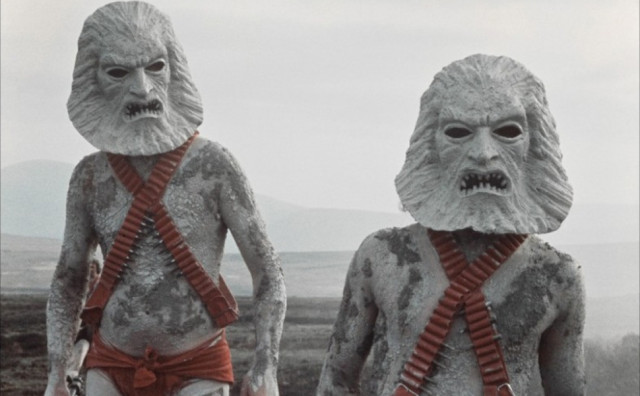
John Boorman’s criminally overlooked and unfairly maligned dystopian tour de force, Zardoz delves into class warfare and lysergic daydreams of a 23rd-century godhead that spews guns and ammunition to its worshippers while intoning, “The gun is good, the penis is evil!” Say what?! And did I mention that Sean Connery spends the film in a crimson diaper/loin cloth? Again, say what?!
This is easily the strangest film on this list––that alone is no small feat––and perhaps the easiest to deride and ridicule, and so doing tempers a truly original and challenging speculative fiction that frisks the line between silly surrealism and silly self-indulgence.
Satire has never looked so strange, just ask the rebellious Zed (Connery), his discarded copy of The Wizard of Oz, or his love interest, Consuella (Charlotte Rampling, not giving any fucks at all), part of a noble race of immortals whose unjustly rule must draw to a close, amirite? Zardoz is a film that’s as easy to mock as it is to enjoy and yet so much of the film is undeniably awe-inspiring, even occasionally beautiful, and ideal for midnight viewing with adventurous friends. “Zardoz is pleased.”
9. Mad Max (1979)
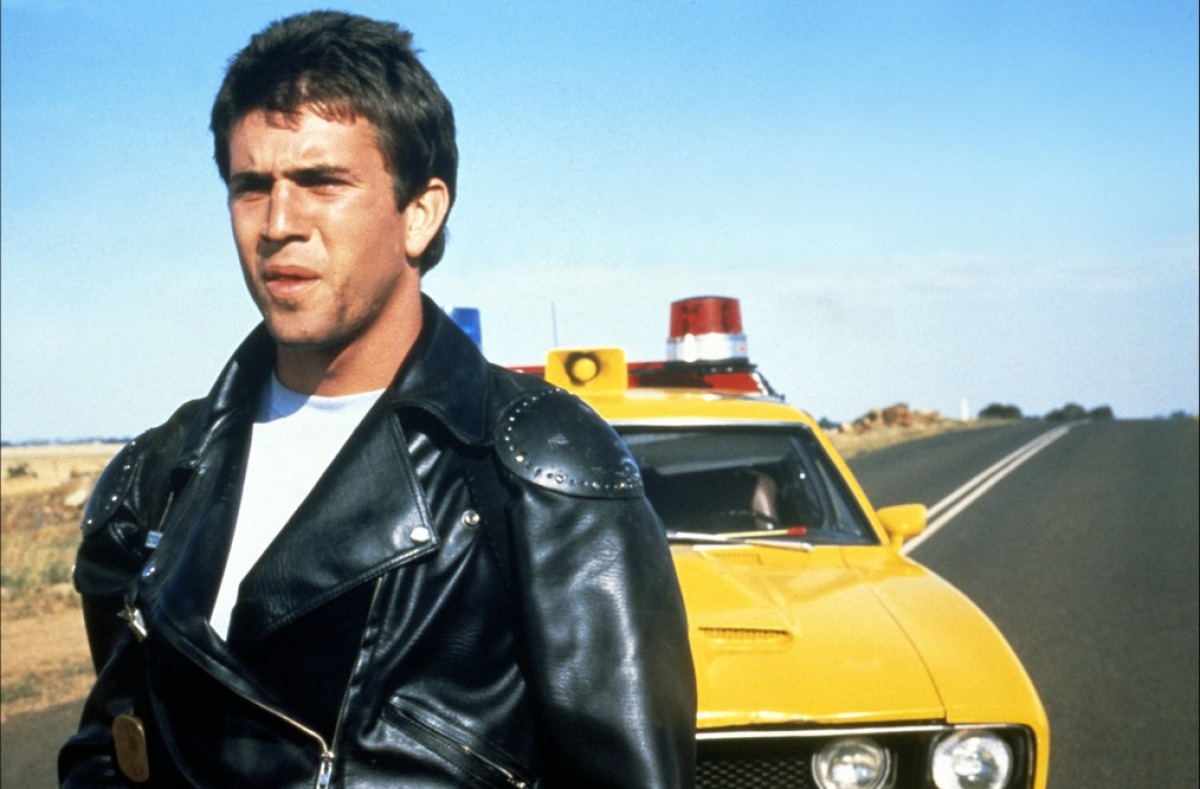
Taking its share of cues from L.Q. Jones’s A Boy and His Dog (see our #9 entry) but injecting its own post-apocalyptic snake bite venom is George Miller’s Ozploitation extravaganza, made complete by an iconic performance from then unknown Mel Gibson as our titular hero, Mad Max.
Set in the land down under, and merely “a few years from now” after a vaguely described apocalyptic catastrophe has stymied society, leaving only roving gangs of thugs and peacekeepers it comes down to the sneering and unstoppable Main Force Patrol loose cannon, Max Rockatansky.
The car and motorcycle chases are impeccably staged, even when threads of story are loose and characters are sketchy at best––Gibson is intentionally expressionless through most of the film––and the striking visual effects and imagery pack a lot of power. Made on just a fraction of a fraction of the budget that the later sequels would consume, Mad Max is a cynical, and striking cult classic.